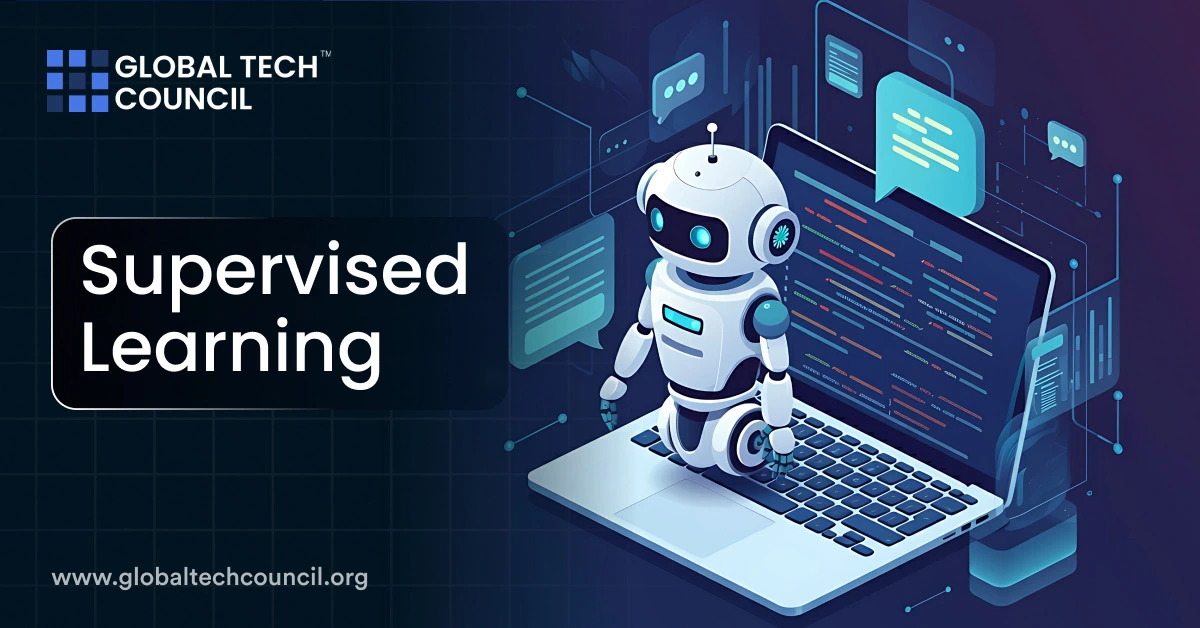
Supervised learning is a fundamental method used in machine learning, where algorithms are taught using datasets that come with labels. This means that each piece of input data is matched with a known result, which helps the model understand and learn from examples. The aim of supervised learning is to accurately predict or classify new data by identifying patterns based on this learning process.
What Is Supervised Learning?
Supervised learning is essentially about learning from examples. It’s similar to teaching a child to recognize fruits—you show them a strawberry and tell them it’s a strawberry. Then, you show a banana and explain that it’s a banana. After enough examples, the child can identify the fruits, even if they are shown new ones. Similarly, supervised learning trains the algorithm to map inputs to outputs by analyzing labeled data. For each input, like a picture or text, the corresponding output is given, helping the model improve over time.
Supervised learning is especially useful when there is a specific goal, such as predicting sales figures or identifying whether an email is spam. During the training phase, the algorithm is fed with both inputs and their related outputs, adjusting itself until it can accurately predict outcomes when presented with new data.
Types of Supervised Learning
Supervised learning is divided into two key types: classification and regression.
Classification
In classification, the objective is to predict a label or category. For example, identifying if an email is spam or legitimate falls within classification tasks. The model analyzes past examples of emails labeled as “spam” or “not spam” and tries to classify new emails accordingly. Common algorithms applied in classification include decision trees, SVM (support vector machines), and logistic regression. These models classify inputs into specific categories based on their features.
Another typical example of classification is in healthcare, where a model might be trained using patient data to predict whether someone has a disease based on their symptoms and test results. Once the model is trained, it can help doctors better assess the risks for new patients.
Regression
Regression, however, focuses on predicting a continuous value. A typical example would be estimating house prices using factors like location, size, and number of rooms. The model learns from historical data—such as past house prices—and figures out how changes in the input factors affect the price. Linear regression is commonly used for this, though more advanced methods like polynomial regression or decision trees are also effective.
A practical use of regression is in forecasting sales. A business might use past sales data along with other details like promotions or market trends, then use the model to predict future sales. Regression is useful for analyzing how different variables influence one another over time.
Common Algorithms in Supervised Learning
Supervised learning involves different algorithms based on the type of problem. Below are some frequently used ones:
1. Decision Trees
Decision trees are simple but powerful models that use a tree structure for decision-making. Each node represents a feature or question, and each branch shows the possible outcome. The model keeps dividing the data until it reaches a final decision or conclusion. These trees are widely used for both classification and regression because they are easy to interpret and understand.
2. Random Forests
Random forests are essentially collections of decision trees. By averaging the predictions from many trees, the model becomes more accurate and stable. This method is suitable for both classification and regression tasks. Random forests are especially good at handling different types of features and reducing the chance of overfitting, where the model becomes too narrowly focused on the training data.
3. K-Nearest Neighbors (KNN)
K-nearest neighbors (KNN) works by comparing a new data point to the closest ones. The algorithm examines the “k” nearest points and assigns the most common class to the new data point. It is often used in tasks like image recognition and recommendation systems, where the proximity of data points plays a significant role in prediction.
4. Support Vector Machines (SVM)
SVM is widely used for classification tasks. It works by identifying the hyperplane that separates various classes in the data. The aim is to increase the gap between classes, which helps improve the model’s precision. SVM is especially helpful for more complex datasets that aren’t easily separable.
5. Neural Networks
Neural networks, however, take inspiration from the way the human brain functions. They consist of layers of linked “neurons” that process data step by step. Neural networks are highly effective at recognizing patterns in tasks like image recognition or language processing. They are especially useful when working with deep learning, which involves multiple layers of neurons processing data in stages.
Real-World Uses of Supervised Learning
Supervised learning is applied in many practical situations, including:
- Spam Detection: Email services use models trained to recognize whether an email is spam based on its content, sender, and other features.
- Medical Diagnosis: Machine learning models can analyze patient records to predict the likelihood of diseases, providing valuable support to healthcare professionals.
- Customer Feedback Analysis: Companies use supervised learning to sort feedback into positive, neutral, or negative categories. This helps them evaluate customer satisfaction and enhance their products.
- Stock Price Forecasting: Financial models rely on supervised learning to predict stock market movements by analyzing past market data and economic indicators.
Final Thoughts
Supervised learning is a powerful approach used for many different problems, from simpler tasks like categorizing emails to more advanced ones like forecasting stock prices. By training on labeled datasets, these models can make predictions and classifications with good accuracy across a range of fields. Whether you’re sorting objects in images or predicting future sales, the key lies in the model’s ability to learn from past data and apply that to future situations.